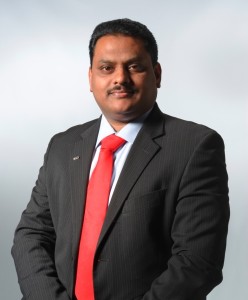
Service providers in the Middle East are currently reaping the rewards of their investment for triple-play services – telephone, Internet and TV via one xDSL or cable connection from a single network provider. Referred to as convergence, this approach represents the coming together of IT, Internet and media and has resulted in an integral communication package that has been widely welcomed by customers.
However, if service providers are to learn from the experiences of the West, they should already be preparing themselves for the inevitable growth in customer demands. Hardware and software, from smartphones to data centres, are becoming ever more efficient. They offer users new and surprising functions every day. The mega trend of convergence appears to be bringing the region closer and closer to unlimited communication in real time. Fixed and cellular networks, clouds and apps are creating amazing symbioses and thus new kinds of business opportunities.
Demand is exploding
However, with every new application, there is an increase in the volume of data to be transported, the need for an omnipresent Internet connection that can be used on the road, and the desire for loss-free, immediate transmission. Storage specialist EMC estimates that 2.8 zettabytes of digital data was generated and stored worldwide in 2012. By 2020, that figure could reach 40 zettabytes. This figure is 57 times the number of grains of sand on all the world’s beaches, according to calculations carried out by EMC.
Simultaneously, global data traffic via the Internet is growing by 32 percent every year. Consequently, the demand for bandwidth in the fixed network is currently doubling around every 18 to 20 months. Video transmission in particular is causing networks to be used virtually to capacity.
Need for infrastructure
In order to meet the needs of the imminent data explosion, there are still obstacles to overcome. The infrastructure needed to be online everywhere, at all times, is often lacking, or it is too slow. And yet users are hardly even interested in how data gets from A to B. They simply want to be able to click on “Send” or “Download”, regardless of the device and network access they are currently using, and the provider should have ensured that everything runs smoothly, immediately, without any complications or loss.
If data volume and the trend toward the digitisation of our everyday routines continue, as seems to be the case, standard copper and coaxial cable networks, and even cellular networks, will increasingly reach their performance maximums due to physical limitations. This then raises the question, which technology can best meet the challenges of the future? How should all the data, signals, pictures, movies, music and apps be transported immediately in the future?
The answer is clear: In the long term, full-scale fibre-optic (FO) networks can only provide the necessary data throughput and the required transmission speed for all subscribers in a network together with other technologies. Fibre optics have become the backbone of the networks.
Something needs to be done if network operators hope to meet, long-term, the requirements in terms of availability, bandwidth and speed. They should further extend FO infrastructures, bringing them ever closer to the customer. But for this to happen, there needs to be wide public support – effectively a kind of convergence of politics, business, society and administrations.
Some countries in northern and eastern Europe, and in the Middle East and Asia, are doing pioneer work and resolutely treading the path toward the fibre society. In many locations, it is the competitors of the established telecommunications providers – such as public services, municipalities, utilities and cable network operators – who are taking over the role of pacemaker and investing in new FO networks.
The question is, how can network operators more quickly master the balancing act between market requirements and the FO trend in order to strike a favourable balance between the amount of investment and profitability? The buzzword convergence could also point the way to the future here: Network extension is easier to promote if strengths are bundled, synergies sought and different investments united. A range of successful public-private partnership projects is necessary to achieve this end. Staying ahead of the curve means network providers cannot afford the luxury of resting on their laurels. With all the signs clearly pointing to growing demand, investing in fibre for the future is not just logical – it is essential.





